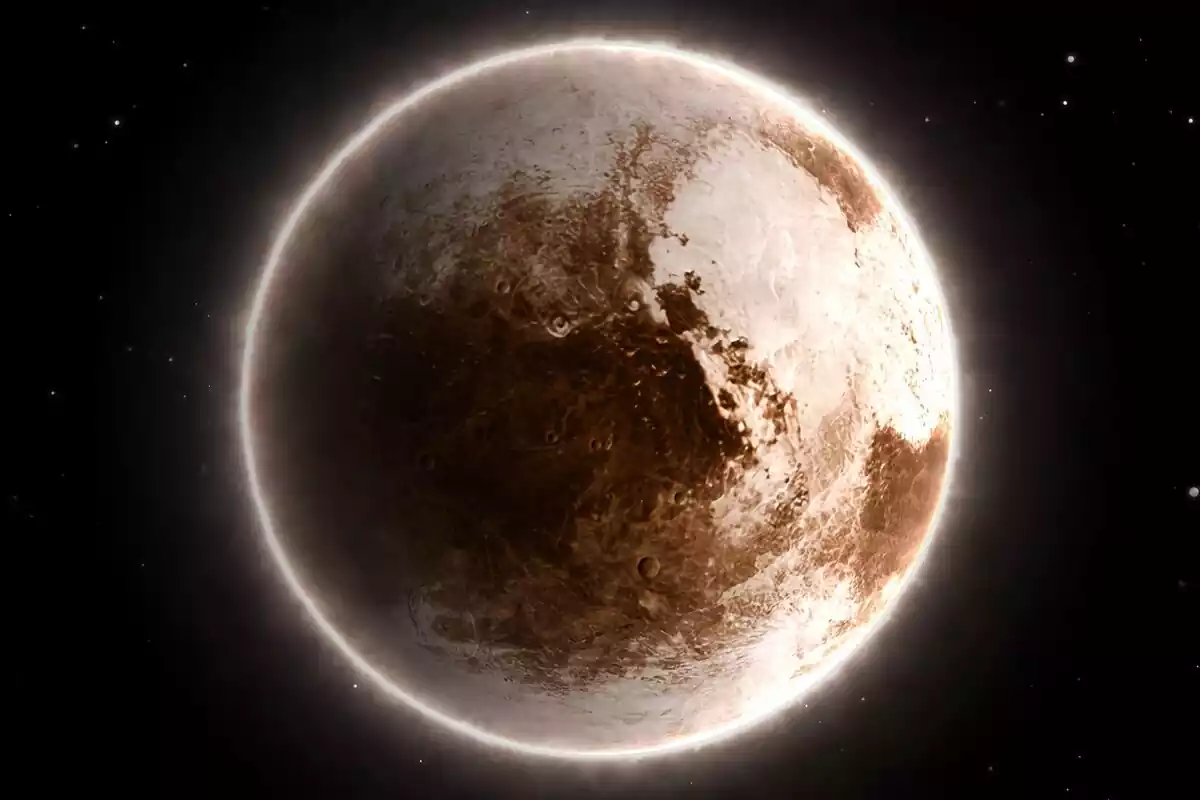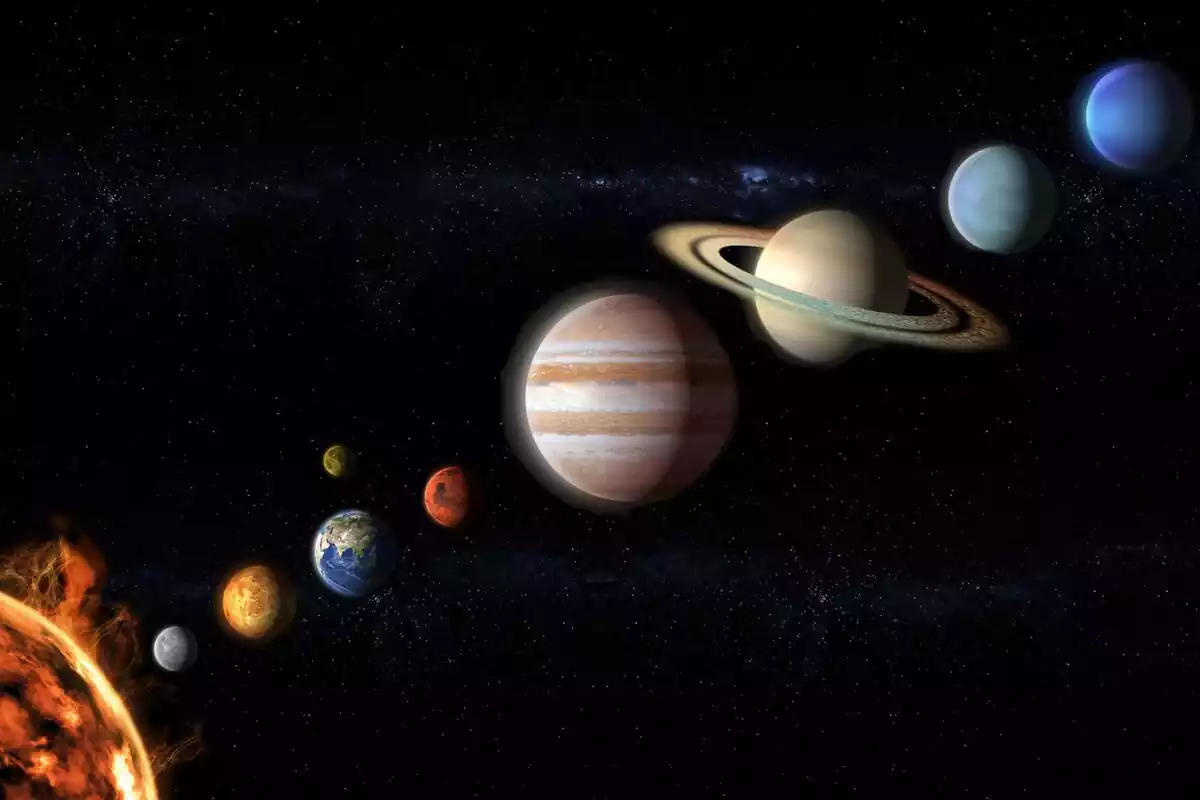Whether you are an astronomy lover or you are curious about learning some facts on the solar system and its 8 (or 10?) planets, you will want to know more.
Solar system planets in order
Our solar system revolves around the star known as the Sun. We can find a series of planets rotating at different speeds and distances from the center.
But how many planets are there in the solar system? Well, although there are officially 8 planets in our solar system, there are two other planets you should also know about. Find out which are the planets in the solar system and some information about them that you might not know.
1. Mercury
Mercury is the closest planet to the Sun. It starts the list of the planets known as the inner planets (together with Venus, Earth, and Mars).
Most of the information we have today was obtained thanks to a space probe called Mariner 10 sent in the mid-1970s.
It has much lower gravity than the Earth, a temperature of more than 300 degrees Celsius, and it is composed mainly of potassium and sodium.
2. Venus
It is the second smallest planet of the solar system (without counting Pluto, which is not a planet). It does not have any satellites (such as Mercury). Its name is due to the Roman goddess of love, derived from Aphrodite, the Greek goddess.
It has a rocky surface, a size, a mass, and a composition similar to the ones of the Earth. However, it is still not habitable given the temperature (between -45 and 500 degrees Celsius) and the absence of atmosphere.
3. Earth
The planet we know best and the only planet in the entire solar system that is habitable in natural conditions by the human being.
As a curiosity, Earth was a Roman goddess, not as well-known as others, but who gives the name to our place in the universe.
Few will know that it is the densest planet in the solar system.
4. Mars
It is the last planet that belongs to the inner planets of the solar system. Its name is a tribute to the Roman god of war, and its color is due to the iron oxide that predominates on its surface.
With a minimum temperature of around -87ºC and a maximum one of 20ºC it has temperatures that we can find (usually) in some areas of the Earth. With no doubt, it is the planet that most attention receives nowadays.
5. Jupiter
The fifth planet of the solar system starts the list of those known as the outer planets which, moreover, mostly have a gaseous composition.
It is formed mainly by hydrogen (more than an 80%) and helium (more than 17%). It does not have a well-defined surface, and there can be gusts of wind of more than 500 kilometers per hour.
Together with Neptune, they are the two only planets that have more gravity than the Earth. Jupiter has a force of 23.12 m/s explicitly, as opposed to the 9.81 that the Earth has. That is to say, more than double the gravity.
6. Saturn
Known for the ring system that it has around it, it is the second biggest planet and with the most mass of the solar system (after Jupiter).
Its particular ring system is unique in the entire solar system. Galileo was the first to contemplate this planet thanks to the invention of the telescope, but since the technology was not advanced enough, he thought it was a large moon (or in other words, a satellite).
Its rings are formed by small particles that revolve at approximately 48 thousand kilometers an hour. That is, 15 times faster than a bullet.
Its minimum temperature is -191ºC and the maximum is not known, although the average temperature is thought to be around -130ºC. It has a composition of Hydrogen nearly in its entirety.
7. Uranus
It is named after Zeus' (Jupiter's) grandfather. It was officially discovered in 1781 by William Herschel.
It is a planet in our solar system that has a very similar composition to the one of Neptune. Given its remoteness from the Sun, its atmosphere is the coldest in the entire solar system.
It is 64 times bigger and has less gravity than the Earth. The temperature is never higher than -200ºC.
8. Neptune
We are officially talking about the last planet in the solar system and therefore, the furthest. Likewise, it is the last planet of those called the outer planets or gas giants.
It has 17 times more mass than the Earth, and it is also a bit bigger than Uranus. It takes this planet 165 years to orbit the Sun.
We know it has 14 satellites (although it could have more). It also has a ring system, but not like the one Saturn has, these are a lot dimmer. The minimum temperature registered is -223ºC, and it has slightly higher gravity than the Earth (11.15 m/s).

9. Pluto?
It was discovered in 1930, and it is complicated to detect. No sharp images had been obtained until 2015, thanks to the New Horizons space probe. This is due to the great distance between the Earth and Pluto.
The distance and its small size were the reasons Pluto was excluded as a solar system planet. This happened in 2006, in the International Astronomical Union.
From then it is classified as a dwarf planet and not as a planet from the solar system per se.
10. Phattie: does it exist?
A tenth planet exists (if we count Pluto, although we've just said it is officially not one of them) called Phattie which was proposed in 2016 as a possible planet.
We would be talking about the furthest planet in the solar system, and it has been proposed as an explanation for various disturbances in the orbits of multiple objects located in the Kuiper belt (a belt further away than Pluto).
If it exists, we are talking about a planet that is between 29,919,574,140 and 104,718,509,490 kilometers from the Sun. To give you an idea, the distance between Pluto and the Sun is 5,934,456,500 kilometers.

